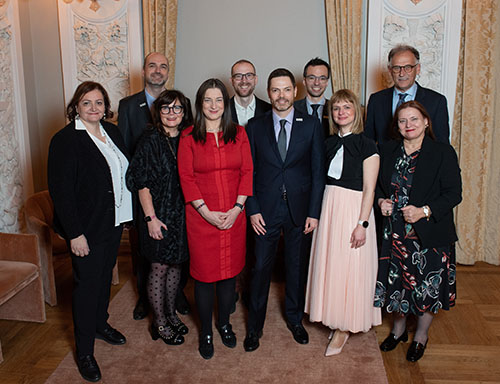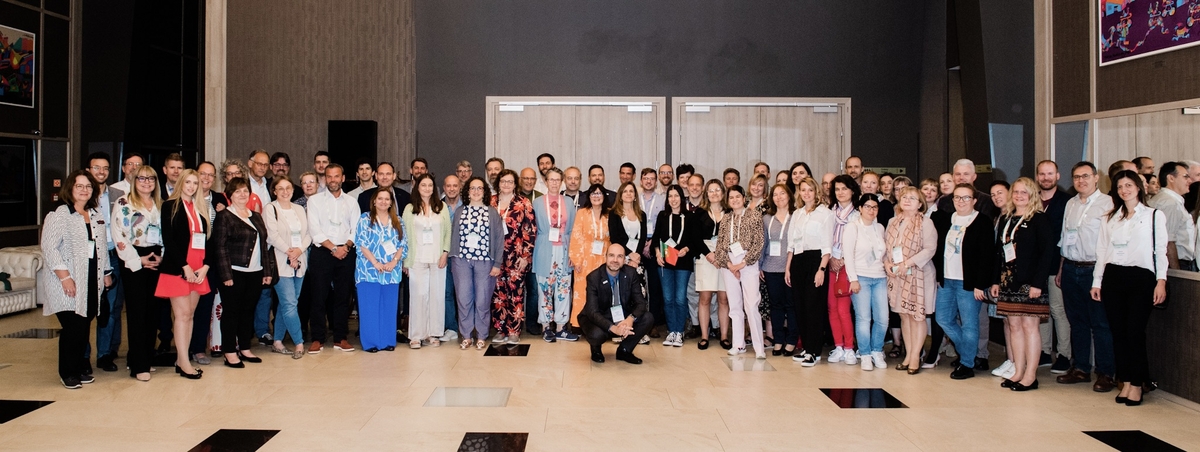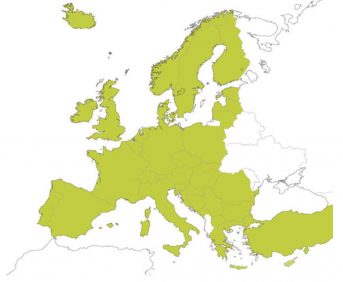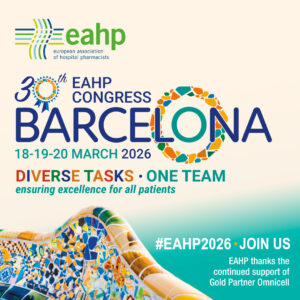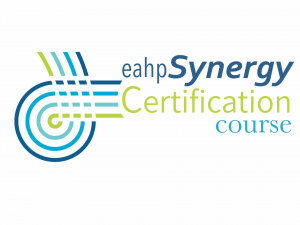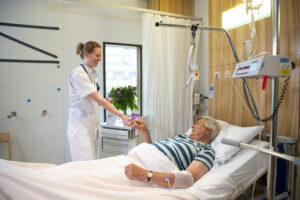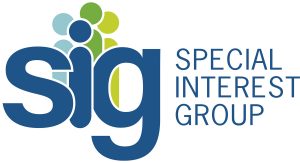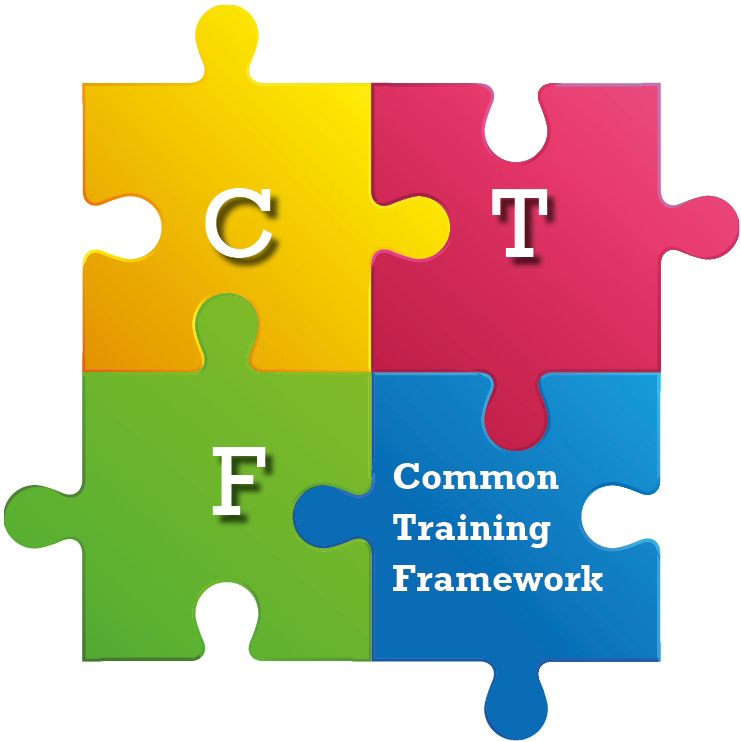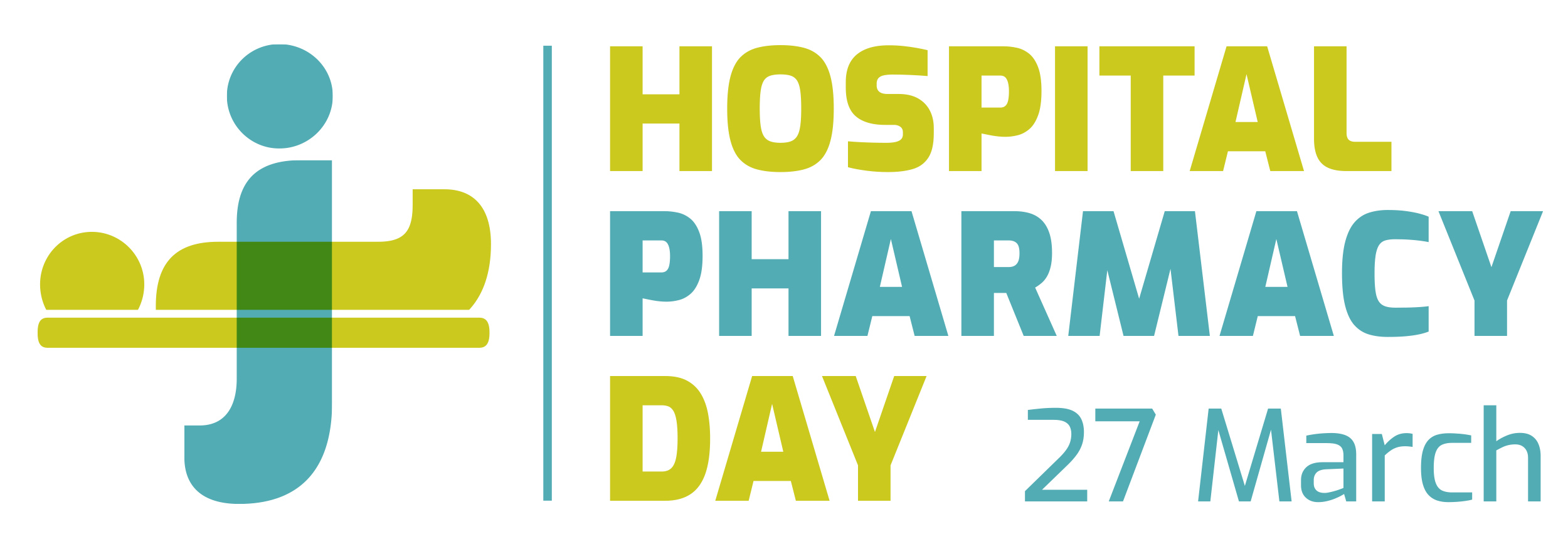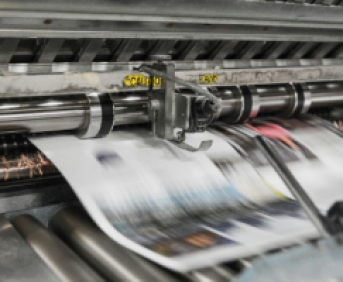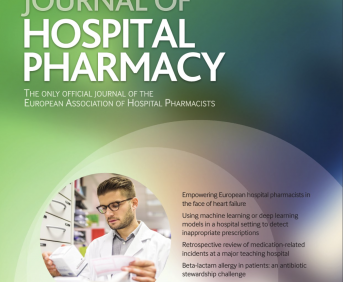DEVELOPMENT OF NEW PRODUCTION WHEN NEITHER PACKAGING NOR SOME OF THE RAW MATERIALS CONFORM TO EUROPEAN STANDARDS
Pdf

European Statement
Production and Compounding
Author(s)
Katrine Bødker Rubach-Larsen, Anne Rungø, Anette Eskildsen, Lone Skovhauge
Why was it done?
A research team at the MR Centre (MRC2) wished to set up the production of Pharmacy Kits, but had no prior experience of, or licence to, manufacture drugs. Thus, the hospital pharmacy was asked to participate in the development of such production.
What was done?
A new MR-scanning technology, hyperpolarisation, for the quantification of metabolic processes with an extremely high sensitivity enables physicians early detection of treatment effects in, for example, cancer and diabetes. A so-called Pharmacy Kit is used in the hyperpolarisation process and consists of a specially designed packaging with tubes, vessels and filters containing the contrast agent and buffer solutions. The objective for the hospital pharmacy1 was to manufacture Pharmacy Kits complying with Good Manufacturing Practice (GMP), though neither packaging nor two of the raw materials conformed to European standards.
How was it done?
The MRC research team presented the hospital pharmacy with the desired combination of compounds and the packaging required for Pharmacy Kit production. The task for the hospital pharmacy was then to set up a manufacturing process that met these requirements and complied with the guidelines for GMP. A production complying with GMP was developed in close collaboration with the MRC and an ongoing contact with the Danish Medicines Agency. During the process the hospital pharmacy carried out its own microbiology test in order to determine if, and for how long, the non-CE-marked packaging could store the contrast agent and buffer solutions. Risk assessment of the raw materials not found in the European Pharmacopeia were conducted. The method investigated by the MRC already takes place at a few other places in and outside of Europe. Experiences from these production sites were implemented and expanded with process optimisation, and specially designed equipment for the production.
What has been achieved?
Due to a strong inter-professional collaboration between the MRC and the hospital pharmacy and due to qualified risk assessments, it was possible to set up a production of Pharmacy Kits according to GMP.
What next?
When researchers contact hospital pharmacies with new ideas, we have to be willing to work with GMP in a different way by applying knowhow and risk assessments in order to ensure developments within the healthcare system.
1. Hospital Pharmacy Central Region, Production, Aarhus, Denmark.
2. MR Centre, Aarhus University Hospital, 8200 Aarhus N, Denmark
PREPARATION OF A CYTOSTATIC STABILITY GUIDE AFTER RECONSTITUTION AND DILUTION
European Statement
Patient Safety and Quality Assurance
Author(s)
Gregorio Romero Candel, Paula Ruiz Belda, Maria del Carmen Caballero Requejo, Maria Jesus Sanchez Cuenca, Jose Marco del Rio , Julian Castillo Sanchez, Luna Carratala Herrera
Why was it done?
In common clinical practice, the stability of medications is an area of interest to obtain maximum security and efficiency. After reconstitution and dilution, knowing the validity period is very important for the effectiveness and safety of the treatment, since it must be administered to the patient under the appropriate conditions. In recent years, a large number of high-impact cytostatic medicines with limited stability data have been registered and incorporated into clinical practice. Frequently, the stability data results are contradictory or insufficient. The main goal is to make a reliable quick guide of reference with the validity periods of the reconstituted and diluted active principles according to physicochemical stability, therefore increasing safety, reducing queries for these doubts and improving the management of unused remains that have high economic impact.
What was done?
A cytostatic stability guide after reconstitution and dilution has been made. The active principles and commercial presentations that are used in the intravenous mixtures area were reviewed.
How was it done?
The obtaining of the physical-chemical stability data has been done by reviewing the information available in Stabilis, Pubmed, Lexicomp and technical data sheets.
What has been achieved?
Fifty-four pharmaceutical specialities from 44 active principles, all in the cytostatic group, were checked. Tables of reference for the elaboration sites were made for consultation. It has reduced the number of consultations conducted and improved the time of preparation of these products. The rest of the elaborations for other administrations have been taken advantage of, making a better use of the pharmacotherapeutic resources.
What next?
The next step is to keep developing consultation tools that improve the safety and management of hospital drugs.
PROGRAMME OF PHARMACOTHERAPEUTIC BENEFIT TO THE SOCIO-SANITARY CENTRES OF A SPECIFIC HEALTH AREA THROUGH THE HOSPITAL PHARMACY SERVICE
European Statement
Clinical Pharmacy Services
Author(s)
Gregorio Romero Candel, Maria Jesus Sanchez Cuenca , Nieves Cano Cuenca, Jose Marco del Rio , Julian Castillo Sanchez, Luna Carratala Herrera
Why was it done?
The healthcare provided in the SSC is not fully integrated into the structures of the National Health System. These patients present a higher risk of adverse events related to pharmacotherapy, due to patient factors, with the treatment, the health system and the institutionalisation. The integral approach of the pharmaceutical benefit was necessary for improving the efficiency, safety, health and economic results due to the process using drugs and other health products in the SSC.
What was done?
A pharmacotherapeutic benefit model has been started through the hospital pharmacy to the Socio-Sanitary Centres (SSC) of our health area. A pharmacotherapeutic management system based on the evaluation and selection of drugs and diet therapy items has been established.
How was it done?
An adherence protocol was made to the hospital pharmacy service, with the benefits that were to be provided to them. A guide was prepared with drugs and nutritional supplements that were available to them according to the Pharmacotherapeutic Guide of the Hospital Pharmacy Service, thus guaranteeing the most efficient products. A request model of both drugs and dietotherapics was developed for the SSC, assigning each centre one day per month to request the order and another day of dispensation. Finally, a calendar of distribution routes for each SSC was prepared.
What has been achieved?
For 12 months, eight SSC have been assigned to this programme, with 538 patients. Twelve shipments have been made to each centre, which have been provided with a total of 682,484 units of 223 active ingredients. The dispensation in diet therapy contained 28,045 units of 13 specialties. It has been possible to improve the pharmacotherapeutic coverage of these patients and reduce the expenditure on drugs in the area through centralised supply.
What next?
Development of follow-up programmes for patients with high health or economic impact drugs. Also, the adherence of new SSC, as well as increasing the dispensing portfolio, and achieving the integration of information systems, to have a total traceability from the patient to the different assistance levels.
IMPROVING THE CONTINUITY OF CARE IN CASE OF EXTRATEMPORANEOUS MEDICINES FOR CHILDREN
Pdf

European Statement
Clinical Pharmacy Services
Author(s)
Stefanie Sauer, Michael Ober, Jürgen Backhaus, Torsten Hoppe-Tichy
Why was it done?
Patients of the Children’s Hospital at the Heidelberg University Hospital are regularly supplied with extratemporaneous medicines from the hospital pharmacy. This often leads to issues in continuity of care in the outpatient setting as patients are required to access ongoing treatment through local pharmacies, which in turn must develop the formulations and procure the necessary raw materials. Therefore, it is not uncommon for interruptions in patients’ therapy to occur.
What was done?
The aim was to improve continuity of care by discussing the medication with the responsible pharmacy before the patient was discharged. Allowing missing raw materials to be procured and clarify any uncertainty about the prescription.
How was it done?
We designed a document that is available on the Intranet. While the child is still on the ward the discharge medication should be noted. The parents had the opportunity to indicate a retail pharmacy of their choice, preferably near the place of residence. This document could be sent to the hospital pharmacy. A hospital pharmacist contacted the specified pharmacy to discuss the extemporaneous medications before the child was discharged. If necessary, the pharmacist can forward the hospital pharmacy manufacturing instructions. Furthermore, the compositions plus further information were then made available on the homepage of the pharmacy in an area to which only experts have access. A telephone number on the hospital pharmacy homepage is available for queries, including those about the formulations.
What has been achieved?
In the discussions with the retail pharmacies, the colleagues were very pleased and grateful about the service provided by the hospital pharmacy. They saved time in preparing patients’ prescriptions. Concerns or doubts were cleared up at an earlier stage of the discharge process, leading to the patient receiving their medicine on time.
What next?
Provision of the document and manufacturing instructions on the homepage serve as a valuable aid for ensuring that the outpatient therapy functions smoothly. It is important that the information is kept current. In the future, further information will be linked to the homepage in the hope of reducing the number of incoming telephone enquiries.
IMPROVING PATIENT FLOW: NOVEL APPROACH TO COMPLETING DISCHARGE SUMMARIES BY PHARMACIST PRESCRIBERS
European Statement
Clinical Pharmacy Services
Author(s)
Louisa Kasprowicz, Elizabeth Wright, Tejal Vaghela, Mohan Thaoa
Why was it done?
The time taken from decision to discharge to discharge summary written on average was 2.5 hours prior to the new service as the clinicians completed the ward rounds before starting on completing the discharge summaries. Prior to implementation of this service the prescribing error rate was 24% and the accuracy of information (medicines started, discontinued and altered during admission) transferred to general practitioners (GPs) was 44%.
What was done?
The novel approach to completing full discharge summaries by independent pharmacist prescribers (PP) was implemented in a busy admissions unit at a large district general hospital in the east of England. PP writing discharge summaries are recommended in the ECIP, Carter and hospital transformation plans.1 2 We introduced the completion of a full discharge summary by PP instead of a medication-only list currently carried out by other NHS Trusts. The aim was to reduce prescribing errors, improve patient flow through AAU and to reduce pressure on the emergency department.
How was it done?
A pharmacist prescribing a discharge service from 9am to 3pm was proposed for patients who have been admitted for < 48 hours. The medical team bleeped the PP when a patient was being discharged to alert the PP. The primary aim of the service was to increase the number of discharge summaries completed before 3pm, reduce the prescribing error rate and to improve the accuracy of information transferred to GPs. The time of 3pm was chosen to allow the clinicians to complete urgent jobs after the ward round.
What has been achieved?
The data showed that after the implementation of the pharmacist prescribing service, 34% of discharge summaries were completed by PP compared to 0% prior to implementation. This released junior doctors time from completed discharge summaries to concentrate on urgent clinical duties. This also meant discharge summaries were received by the pharmacy in a timelier manner and patients were ready for discharge earlier in the day. The prescribing error rate was reduced to 0.9% and the accuracy of information to GPs was increased to 98% on discharges summaries completed by PP compared to junior doctors’ discharge.
What next?
This new service has made a positive impact on the discharge flow from AAU. Patients are receiving their discharge medications earlier so improving patient flow and patient experience through the department. The service has received positive feedback from patients, the lead consultant, doctors and nursing staff. It is hoped in the future this service could be extended until 5pm and rolled out to other areas in the hospital.
ACTIVE PARTICIPATION OF THE HOSPITAL PHARMACIST IN THE OPTIMIZATION OF ANTIMICROBIAL THERAPY AFTER OBTAINING THE MICROBIOLOGICAL RESULTS
European Statement
Clinical Pharmacy Services
Author(s)
Pilar Aznarte-Padial, Lourdes Gutierrez-Zuñiga, Carmen Valencia-Soto, Sara Guijarro-Herrera, Carmen Hidalgo-Tenorio, Juan Pasquau-Liaño
Why was it done?
Re-evaluation of empirical antimicrobial treatment, after knowledge of the microbiological results, is a practice that contributes to the proper use of antimicrobials, but the consultation of these findings by the medical prescribers may be delayed. The hospital pharmacist is an essential member of Antibiotic Stewardship programs, who can maintain an individualised monitoring of prescription and maintaining direct communication with the medical prescribers. The monitoring of the antimicrobial prescriptions and the revision of microbiological results, allows us to carry out an individualised advice to optimise the antimicrobial therapy
What was done?
Pharmaceutical advices were sent from the Pharmacy Service to the prescribing doctor, through the Electronic Prescription Program (EPP) to optimize antimicrobial therapy after the microbiological results are known
How was it done?
From January 2015, together with daily monitoring of prescriptions of antibiotics, the results of microbiological cultures requested were consulted. We started to send warning messages from the Pharmacy Department to doctors, through EPP. Our goal was to advise in relation with microorganisms resistant to the prescribed antibiotic, microorganisms not covered and proposals of the de-escalation.
What has been achieved?
During 2015, we made 166 communications; 20 the same day of the discharge. Of the remaining 146, 46 were of de-escalation, 44 of resistant antimicrobials and 56 of non-covered microorganisms. Global acceptance was 80.1% (117/146): 80.1% of the de-escalation, 81.8% of antibiotic resistant microorganisms and 78.6% of non-covered microorganisms. The Services which received more advices were: Internal Medicine (57/146), General Surgery (38/146) and Pneumology (9/146), with an acceptance of 82.5%, 76.3% and 100.0%, respectively. The carbapenems were the most involved antibiotic group (58.9%). Ertapenem was involved in advices of non-covered microorganisms in 21.4%. The most commonly used antibiotics after the de-escalation were: fluoroquinolones (18.9%), beta-lactams with a beta-lactamase inhibitor (10.8%), fosfomycin (10.8%) and ampicillin (10.8%).
What next?
The acceptance degree obtained permits to consider this initiative as a valid strategy to optimize antibiotic prescriptions. This procedure reduces the use of restricted antibiotics, by lowering the cost of treatments and the resistance emergence.
IMPROVING INVESTIGATIONAL DRUG MANAGEMENT: AN INNOVATIVE PROCESS
Pdf

European Statement
Clinical Pharmacy Services
Author(s)
Francesca Vecchione, Melania Rivano, Patrizia Tadini
Why was it done?
The new process was developed in order to face the significant increase of ID management assigned to the Pharmacy, along with the logistic problems due to the several areas of storage, dispensing and administration. Additionally, it allowed to assure the effective use of ID reducing the risk of failure and improving the patient safety.
What was done?
The Good Clinical Practice guidelines establish that the principal investigator (PI) can delegate the investigational drug management to a pharmacist. In our university teaching hospital with a large amount of clinical trials (CT), pharmacy service proposed an optimisation of ID (investigational drug) management through the elaboration of a form to request the ID. Along with this, we assigned each protocol to a specific type of management and we created an intranet site from where healthcare professionals can download the form.
How was it done?
The pharmacy service created for each CT a specific form organized into 5 sections. Section A, B and C were filled up with protocol information (name, centre code, PI) patient data (initials, patient code) and the treatment schedule. Section C, completed by data manager, showed the quantity of drug to be dispensed and the expected day of administration. Section D was completed with batch and expiry date. The form had to be signed by the pharmacist at the moment of the dispensation and signed back by the committed person who took it. Section E reminded the type of management assigned to the protocol. Five different types of management had been identified, based on the characteristics of storage, the activities required by the protocol (IWRS, unblinded pharmacist, drug preparation) and the dispensing method.
What has been achieved?
Data from January to June 2017 attested 60 ongoing protocols, 722 dispensations for patient, 237 drugs prepared by pharmacists and 986 in Chemotherapy preparation unit. The development of the new procedure ensured the ID tracking, the overcoming of logistical difficulties and an increase of the safety.
What next?
We are going to keep on improving the pharmacist role in CT by ensuring ID are handled, stored and correctly managed. The objective is to enhance the collaboration of clinical research professionals in the management of CT.
THE IMPACT OF A NOVEL CLINICAL DECISION SUPPORT SYSTEM ON ANTIMICROBIAL STEWARDSHIP AT AN ACUTE NHS TEACHING HOSPITAL
Pdf

European Statement
Clinical Pharmacy Services
Author(s)
Stephen Hughes, Katie Heard
Why was it done?
The context, strategies, and delivery of AMS vary markedly between hospitals, largely falling within two headings, that of restriction or enablement. Restricted access to broad-spectrum antimicrobials through pharmacy and microbiology control of supply is the most common approach as requires minimal resource and implementation. This controls antimicrobial misuse but the long term benefits are less clear. The negative professional culture this restriction develops may erode inter-professional trust and delay time to first-dose, negatively impacting upon sepsis management whilst approval is sought. CDSS was used to transform the working role of the AMS team.
What was done?
A real-time clinical decision support system (CDSS) has been tested and implemented for the first time in an acute NHS hospital. CDSS has enabled the service evolve from an effective restricted antimicrobial stewardship (AMS) service to a more desirable enablement service, where the team aspires to support all prescribers to take responsibility for good AMS practice
How was it done?
In April 2016 a commercial CDSS was introduced at a single site London teaching hospital with an established, multi-professional AMS team. A service evaluation was conducted to understand the impact of CDSS on practice. Data was collected for three months pre and post implementation, including time spent compiling data for AMS daily ward round, the number and types of ABX-related interventions made and total antimicrobial use (defined daily dose [DDD] per 100 occupied bed days [OBDs]).
What has been achieved?
Implementation of CDSS saw a transformation of the AMS service from tele-consult service from the microbiology labs to a patient-facing ward based service, through use of mobile technology. The relocation of AMS team staff resource allowed for increase ward presence and daily ward rounds on surgical, medical and admission wards. AMS interventions increased (138/quarter to 298/quarter) post-intervention. Clinician acceptance of AMS team interventions increased from 81% to 98%. High-impact interventions, such as escalation of septic patients, early discharge and ID reviews, increased on the ward based reviews. Total ABX (DDD/100OBD) reduced by 18% over study period.
What next?
The CDSS is being used to evolve the service to further support AMS practice. Patient orientated outcome data is being collected and used to drive further service improvements
PERSONALIZED BUSULFAN THERAPY: IMPLEMENTATION OF A THERAPEUTIC DRUG MONITORING PROGRAM (TDM)
European Statement
Clinical Pharmacy Services
Author(s)
VERA DOMINGOS, VERA PIRES, SÍLVIA SANTOS, PATRÍCIA TRINDADE, ANA INÁCIO, ELZA CANDEIAS, SUSANA SIMÕES, PAULO PAIXÃO, NUNO MIRANDA, ANTÓNIO GOUVEIA
Why was it done?
Personalized BU dosing is considered because BU has a narrow therapeutic index and exposure have been associated with important clinical outcomes. High exposures have been associated with an increased risk of toxicities (acute graft-versus-host disease and veno-occlusive disease) and low exposures with graft rejection and relapse.
For this reason, in a multidisciplinary working group, we identified an opportunity to improve the treatment of your patients.
What was done?
Implementation of a TDM procedure for Busulfan (BU) in conditioning therapy for hematopoietic stem cell transplantation (HSCT). Study variability in PK parameters and evaluate TDM efficacy. From this initial period, we perform TDM on all patients under Bu conditioning.
How was it done?
The steps followed were:
1. Pre-implementation: bibliographic research, identify reference centers to perform BU plasma assay. Development and validation of a LC-MS / MS method by the National Institute of Forensic Medicine. PK analysis using ADAPT-5 software.
2. Pilot: Trial and assess the feasibility of the procedure. Cross-validation of the results with UMC Utrecht.
3. Implementation: clinical practice, doing the necessary dose adjustments. Prospective collection of clinical and PK data.
The main obstacle is the lack of analytical methodology in our center and the turnaround time.
What has been achieved?
We performed a preliminary analysis with 21 patients. Mean clearance (CL) was 0,19L/h*kg±0,05L/h*kg and volume of distribution 0,65L*kg±0,22L*kg. Body weight was the most predictive covariance.
CL was significantly different between patients 10 years old (p = 0,024) and over treatment (p=0,0191). The type of conditioning regimen didn’t show relation with the BU CL (p=0,0514).
TDM increased the number of patients with an optimal exposure (target AUC ±10%) from 42% to 83%.Dose was reduced in 10 patients (max 37%) and increased in 3 (max 19%). 1 patient maintained the prescribed dose.
What next?
TDM increased significantly the number of patients with optimal exposure to BU.
This procedure is pioneer at a national level and it relies on a strict protocol which includes collaboration with several hospital departments and other highly-specialized external centers. This can be used as a tool for other drugs and to empower the pharmacist as an active agent in the clinical setting.
OPTIMIZATION OF INTRANET COMMUNICATION TO THE CLINIC
Pdf

European Statement
Education and Research
Author(s)
Nina Kærgaard Hansen
Why was it done?
The initiative was performed to investigate the accessibility and usability of the current intranet in order to improve intranet information and communication from the hospital pharmacy to the clinic.
What was done?
Workshops with usability tests were performed with four different professions who are expected to use the intranet information and communication from the hospital pharmacy.
How was it done?
Workshops for selected professionals including pharmacists, pharmaconomists and nurses were held. The workshops consisted of four parts:
1. Video capture and recording test: Participants were asked to find specific information on the intranet. Comments, clicks and movements of the mouse were recorded during the task.
2. Sorting and prioritization the pages: Participants were given screen shots of 57 pages from the intranet. The participants were asked to sort the pages in three categories: need to know, nice to know and insignificant.
3. Evaluation of selected texts: Participants were given 5 examples of texts from the intranet and asked to assess if the text was relevant and understandable.
4. Structured focus group interview: Using a structured interviewguide the use and challenges experienced by the participants were explored.
What has been achieved?
From the present initiative it was found that the structure of the intranet was not optimal and did not reflect the daily needs from the users. The results from the workshops provided a clear guideline on how to restructure the intranet. It is important to make short cuts and optimize search function.
In addition, the initiative revealed how to improve texts:
– Write shortly, concisely and action oriented: “Tell us what to do”.
– Write the most important first, then elaborate and insert links to learn more.
– Use subheadings for skimming the text.
What next?
A campaign is planned to advertise the new intranet structure. Number of users and subscribers on the intranet pages is followed to see if the activity increases. Editors have been educated to write texts that are short, concise and written in an action oriented language
